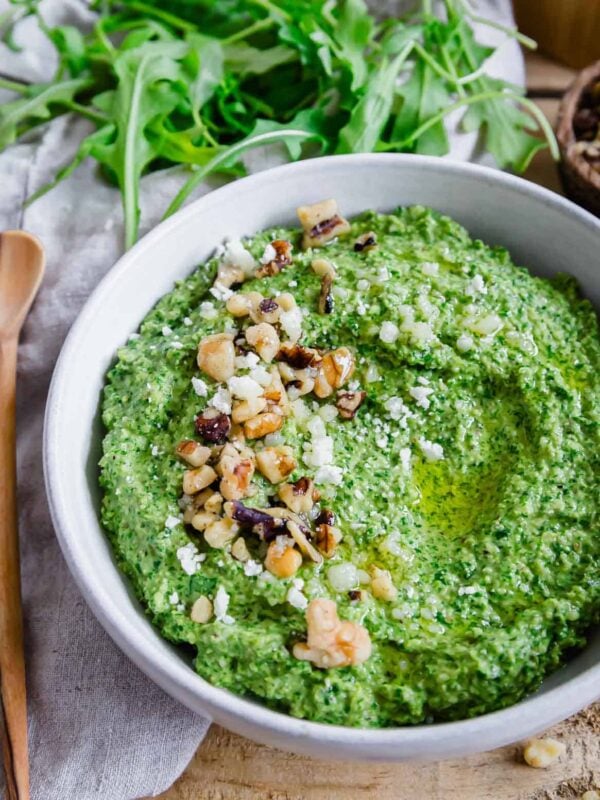Rhubarb might just be the most interesting vegetable out there, masquerading and living its best life as a fruit in the classic strawberry rhubarb pie it’s best known for. This tangy stalk is one of the quintessential harbingers of the spring season with its bold flavor and beautifully colorful stalks. Let’s talk about everything you need to know about rhubarb to make the most of it while it lasts.

What is rhubarb?
Rhubarb is a perennial plant characterized by its long, slender stalks, which bear a striking resemblance to celery and Swiss chard but dazzle in shades from deep ruby to pale green. This hardy plant belongs to the buckwheat family and thrives in cooler climates, often sprouting up as one of the first signs of spring in gardens. While its leaves are toxic and should never be eaten, rhubarb’s stalks are celebrated for their unique tartness and versatility in both sweet and savory dishes despite being best known in a pie.
Is it a fruit or a vegetable?
From a botanical standpoint, rhubarb is undeniably a vegetable because it is the edible stalk of the plant rather than a seed-bearing fruit. However, in the culinary world, rhubarb often finds itself sweetened and tucked into desserts alongside true fruits — like strawberries — leading the USDA to classify it as a fruit for kitchen purposes. This duality makes rhubarb one of a kind in many ways.
“I ADORE rhubarb! It’s free food that grows in your yard or garden, no matter the soil conditions. Nothing says spring and summer like rhubarb!”
— Laura Sampson, Little House Big Alaska

When is rhubarb season?
Rhubarb becomes available in markets or ready in your garden in the spring and early summer, typically hitting its peak between April and June. The seasonal timing can vary by region, but these months generally are when you’ll find the freshest and most flavorful rhubarb available.
What does rhubarb taste like?
Rhubarb has a uniquely sharp tartness that makes it stand out in the vegetable world, often requiring a generous sprinkle of sugar to tame its puckering sourness. When raw, this stalky plant is crisp and fibrous like celery, but transforms into a tender, mellower treat once cooked.
While its bright hues, from ruby red to pale green, might suggest varying flavors, the color differences are more about visual appeal than taste. Rhubarb is frequently paired with sweet fruits such as strawberries and raspberries to balance its intense tartness.
How to choose the best rhubarb
When selecting rhubarb, whether from a market or your own garden, opt for firm and crisp stalks that show no signs of blemishes or wilting. The stalks’ color varies from deep red to green or pink, but the color does not affect their ripeness. Focus on the texture and health of the stalk.
Medium-sized stalks are often ideal as they tend to be less fibrous and stringy than their larger counterparts. Always remember to remove and discard the leaves if you’re harvesting the rhubarb yourself. They’re very high in oxalic acid and toxic.

The best way to store rhubarb
To keep rhubarb fresh after bringing it home, store the unwashed stalks in your refrigerator, ideally in the crisper drawer. Wrapping them loosely in aluminum foil or a breathable material like beeswax wrap helps maintain their freshness for up to a week.
For longer storage, rhubarb can also be chopped and frozen which is a great way to incorporate into recipes well beyond its short-lived season. Avoid storing rhubarb near produce that produces a lot of ethylene such as apples or bananas as it will accelerate the aging process causing the stalks to soften more quickly.
How to use rhubarb
Rhubarb’s bold tartness makes it a standout ingredient. Its flavor is tempered by cooking or baking, making it a well-loved seasonal ingredient in recipes like rhubarb bread. While it’s famously paired with strawberries in pies and desserts, rhubarb’s culinary potential extends far beyond.
“Rhubarb drinks are one of the best springtime treats if you ask me. I love infusing fresh rhubarb into simple syrup to use in cocktails and mocktails. It pairs beautifully with strawberries, gin and prosecco.”
— Susannah Brinkley Henry, Feast + West
It also lends a refreshing acidity to savory dishes. Using rhubarb to create a tangy chutney that pairs wonderfully with grilled meats or in a spring vegetable stir-fry for added vibrancy are two great ways to showcase its savory potential. Salsa is another fitting use for the tartness of fresh rhubarb, especially when paired with pork, chicken or fish. It also lends itself well to pickling which can then be snacked on or added to salads.
In desserts, consider layering it into a parfait, simmering it into a rich syrup for cocktails or folding it into the batter for muffins or scones. Making a compote by cooking it down with other fruits is a wonderful way to can its flavor and enjoy the taste of rhubarb throughout the year.
This article originally appeared on Food Drink Life.
Gina Matsoukas is an AP syndicated writer. She is the founder, photographer and recipe developer of Running to the Kitchen — a food website focused on providing healthy, wholesome recipes using fresh and seasonal ingredients. Her work has been featured in numerous media outlets both digital and print, including MSN, Huffington post, Buzzfeed, Women’s Health and Food Network.














never would have guessed that it was a vegetable!